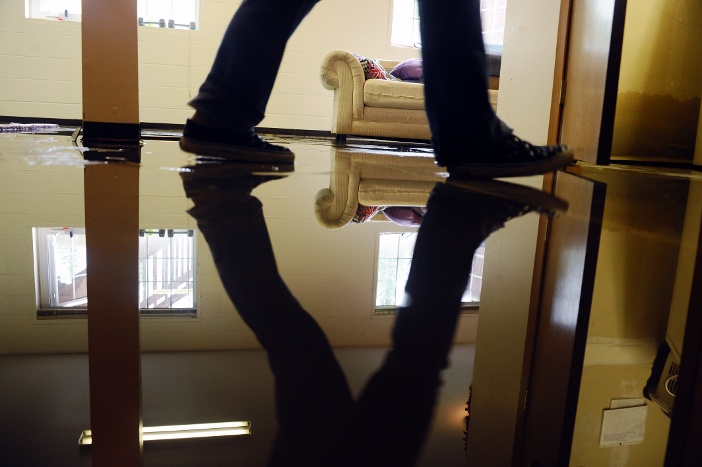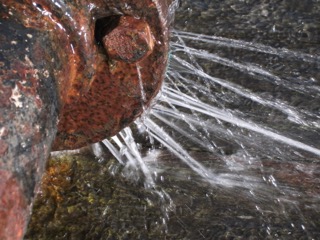Understanding the Signs of a Burst Pipe and Rapid Repair Approaches
Request An EstimateThis post down below about How to Install and Connect a New Dishwasher is quite attention-grabbing. Read it for yourself and decide what you think about it.

A burst pipeline is a significant emergency; you can only stand as you watch water you pay dearly to rejoin with the earth. In worse situations, you discover a swimming pool on your cooking area floor, which is a terrific trip threat, particularly if you have children around. If the pipeline that burst was in your wall surfaces, problem: you may require to paint that entire area.
Exactly how can a tragedy like a ruptured pipeline be stopped and taken care of? Well, by listening to your expert emergency plumbings and also complying with these rules.
Exactly how do I know when my pipelines have burst?
Changing water pressures
Pipelines do not just burst in a day. You might have discovered that your kitchen faucet or shower doesn't run quickly when you turn the tap. It may pause for a couple of seconds and afterwards blast you with more pressure than usual.
In various other instances, the water may appear typical in the beginning, after that drop in stress after a few secs.
Contaminated water
Lots of people assume a ruptured pipeline is a one-way outlet. Fairly the contrary. As water flows out of the hole or wound in your plumbing system, pollutants locate their way in.
Your water might be infected from the source, so if you can, examine if your water tank has any type of troubles. However, if your drinking water is provided and also purified by the city government, you need to call your plumber instantly if you see or smell anything amusing in your water.
Puddles under pipelines and sinks
When a pipe ruptureds, the discharge creates a pool. It may appear that the pool is growing in size, and also no matter the number of times you wipe the pool, in a few mins, there's an additional one waiting to be cleaned. Usually, you may not be able to map the pool to any noticeable pipelines. This is a sign to call an expert plumber.
Damp walls as well as water stains
Prior to a pipe bursts, it will leak, many times. If this consistent dripping goes undetected, the leakage might graduate right into a broad gouge in your pipe. One very easy way to avoid this emergency is to watch out for wet walls ad water stains. These water stains will lead you right to the leakage.
Untraceable leaking sounds
Pipe bursts can take place in one of the most undesirable areas, like within concrete, inside walls, or under sinks. When your house goes quiet, you might be able to hear an aggravatingly relentless leaking noise. Even after you have actually inspected your shower head as well as kitchen tap, the trickling might continue.
Dear visitor, the leaking may be originating from a pipeline inside your walls. There isn't much you can do about that, other than inform an expert plumber.
Turn up the Warmth
Set up followers to blow heat right into cold areas. Keep the garage door shut. If you have reduced water circulation, heat the most vulnerable pipelines (normally in cellars and also crawl spaces or near exterior walls) with a hair clothes dryer. Leave the faucet on while you use warm. As you melt ice, the circulation will increase. To avoid pipes from cold, protect your walls.
Begin Eliminating the Water
Order the mop, pails as well as a shop vacuum cleaner to start to do away with the water because you definitely do not want it saturating into every little thing else in the house. And also, a quick tidy up will minimize the chances of something obtaining moldy.
What do I do when I identify a burst pipeline?
Your water meter will remain to run even while your water wastes. To lessen your losses, find the primary controls and also turn the supply off. The water pipe are an above-ground structure beside your home.
How to Fix & Detect a Leaking Pipe
How Do I Know if a Pipe is Leaking?
Leak detection tests can help you determine if your pipe has a leak. Even if you don’t see an apparent leak, you should still conduct leak detection tests regularly to save water and money—and prevent major damage to your home.
Water meter. It can be helpful to figure out what your usual water meter usage numbers are and then monitor them regularly. To monitor your meter, first, turn off all water faucets in your home. Check the meter and write down the numbers. In a few hours, check the meter again. If the numbers have changed, you have a leak. Water gauge. Use a water gauge to test your water pressure. Your showerhead should produce a certain amount of water pressure based on its model and design. If the pressure is lower than it is supposed to be for that specific showerhead, your home likely has a leak. Puddles. Look inside your bathroom, laundry, and kitchen sink cabinets. Puddles around the cabinets or around toilets, tubs, showers, and washing machines indicate the presence of a leaking pipe. You may also notice loose tiles, peeling or flaking paint, or mold caused by water accumulation. Napkin test. Even if you don’t see any puddles, you may still have a leak. You can test for water leaks in the bathroom, laundry, and kitchen by wiping below-sink connections with a napkin, paper towel, or piece of toilet paper. If it becomes damp, you probably have a leaking pipe under the sink. Discolored walls. Walls that are discolored—usually with brown or yellow stains—or bulging might mean that they have been impacted by water damage caused by a leaking pipe. Smell. A leaky pipe will create sitting water, and over time, that water may develop a musty smell. If your home smells musty, but you can’t locate the source, it may be due to a leak. Steps for Fixing a Leaking Pipe
A leaky drain can be remedied by tightening the pipe base, replacing the drain seal, caulking the rim, and tightening the pipe nut. Similarly, a leaking toilet pipe can be treated by tightening the packing nut. You may also need to replace the valve. A leaky faucet may just need tightening or replacement of the washers. If that doesn’t work, consider replacing your faucet. If your pipe has a hole in it, you may want to use a pipe leak sealer or pipe leak tape. This quick fix for water pipe leaks can also temporarily fix a copper pipe leak. https://www.ahs.com/home-matters/quick-tips/how-to-tell-if-pipes-are-leaking/

As an avid person who reads about What to Know Before Installing a Dishwasher, I thought sharing that blog post was essential. Feel free to set aside a second to share this content if you liked it. Thanks so much for taking the time to read it.
Request Estimate